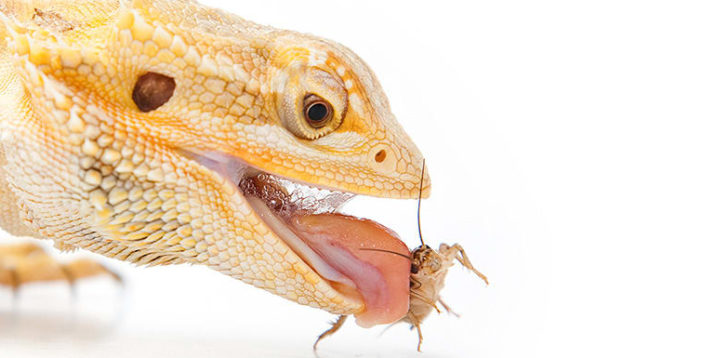Should Cricket Flour Be Part of Your Meal Plan?

Have you ever heard of carmine? It’s a red dye used in candy, lipstick, juice blends, maraschino cherries, fruit on the bottom yogurt, and more. Before 2012 it garnered little to no thought from consumers…until news reports surfaced and revealed that carmine was a byproduct of crushed or boiled cochineal beetles. Cue the freak out. The FDA now requires companies to list it as an ingredient so those allergic to the beetles (or those with an aversion to eating insects) can avoid it.
Although entomophagy (the practice of eating insects) is the norm in countries such as Africa, Asia, and South America, consumers Stateside haven’t typically been keen on the practice. We view bugs as creepy crawlies or disease-carrying vermin, not a source of nourishment, which explains why you don’t see fried crickets on your local bar menu.
But it appears we might be in the midst of a paradigm shift. In 2014, the edible insect industry raked in $20 million and cricket flour — a powdery substance made from ground up crickets — has become a trendy workout supplement and cooking additive thanks to the entrepreneurs who finally figured out how to market it. Their current target market is squarely aimed at fitness enthusiasts who they hope see cricket flour (and other insectibles) as environmentally friendly, low-carb, protein-packed fuel.
Exo was one of the first companies that helped reshape the perception of cricket protein. In 2013, they surpassed their Kickstarter goals by $34,911 and with the help of Fat Duck’s Michelin-Star chef Kyle Connaughton, they’re now producing cricket flour-based protein that include flavors such as Barbecue, Cocoa Nut, Peanut Butter and Jelly, and Banana Bread. A year after Exo launched, Chapul found backers — and publicity — on Shark Tank. They sell protein bars as well, but also sell cricket protein flour ($39 for 16 ounces).
And, to be fair, there are legs to their environmental and nutritional claims. Since 2013, the United Nation’s Food and Agriculture Organization have been championing the use of Earth’s 1,900 edible bugs as protein sources that can help feed the planet’s 7 billion people. In addition, when it comes to sustainability, cricket farmers point out that it requires one gallon of water to raise a pound of crickets. Comparatively, one pound of beef requires 1,799 gallons, one pound of pork 576 gallons, and one pound of chicken 468 gallons.
Crickets are also nutritionally dense. They’re high in omega-3 fatty acids and cricket flour contains 12 grams of protein per two tablespoons. “Cricket protein stacks up well against other protein sources such as chicken, steak, and eggs,” says New York City-based nutritionist and personal trainer Courtney Ayana. “You can also use it to cook or bake, whether you’re making muffins or your own protein bars.” Cricket flour can also be used in pancakes, cookies, applesauce, to dredge chicken, or to toss with Brussels sprouts. In other words, it’s versatile.
